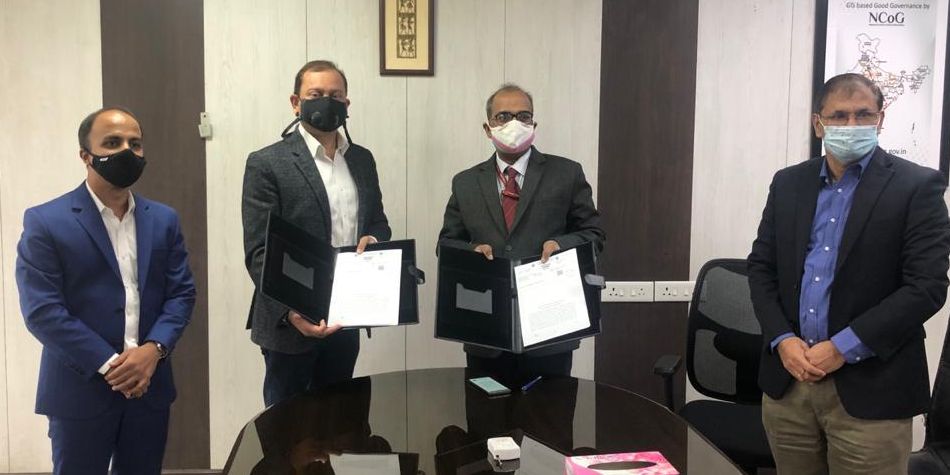AWS Public Sector Blog
Tag: science
Building NHM London’s Planetary Knowledge Base with Amazon Neptune and the Registry of Open Data on AWS
The Natural History Museum in London is a world-class visitor attraction and a leading science research center. NHM and Amazon Web Services (AWS) have worked together to transform and accelerate scientific research by bringing together a broad range of UK biodiversity and environmental data types in one place for the first time. In this post, the first in a two-part series, we provide an overview of the NHM-AWS project and the potential research benefits.
Why Fugaku, Japan’s fastest supercomputer, went virtual on AWS
Japan’s Mount Fuji is famous for its height and width but it’s also reachable by novice hikers without lots of time on their hands due to the nation’s efforts to make it accessible. Now, the researchers behind one of the world’s fastest supercomputers, Fugaku, which is another name for Mt. Fuji, are trying to make the supercomputer just as accessible on the Amazon Web Services (AWS) Cloud. Read this post to learn more.
Announcing new AWS data connector for popular nonprofit CRM: Blackbaud Raiser’s Edge NXT
The AWS for Nonprofits team announced a new Amazon AppFlow data connector that enables nonprofits to transfer valuable data from Blackbaud Raiser’s Edge NXT to AWS services and other destinations. In this blog post, learn some common nonprofit use cases that can be addressed by integrating your data with other AWS services and commercially available software-as-service (SaaS) applications.
Announcing new cloud-based solutions for credit unions and nonprofit research organizations
Today, AWS announced the addition of new nonprofit solutions in the AWS Solutions Library and AWS Marketplace. These solutions are tailored to the unique requirements of credit unions and nonprofit research organizations. They range from architectural guidance to ready-to-deploy solutions, and also include offerings developed by AWS Partners. Learn the solution categories that collect these new solutions into important mission areas, as well as some of the specific solutions that can help credit unions or research organizations get started with AWS.
34 new or updated datasets on the Registry of Open Data: New data for land use, Alzheimer’s Disease, and more
The AWS Open Data Sponsorship Program makes high-value, cloud-optimized datasets publicly available on AWS. This quarter, AWS released 34 new or updated datasets from Impact Observatory, The Allen Institute for Brain Science, Common Screens, and others, which are available now on the Registry of Open Data in the following categories.
Building the first quantum computing applications lab in India
The Ministry of Electronics and Information Technology (MeitY) in India is establishing a Quantum Computing Applications Lab, in collaboration with AWS, to accelerate quantum computing-led research and development and enable new scientific discoveries. This is MeitY’s first initiative in the country to provide scientific, academic, and developer communities with access to a quantum computing development environment in the cloud. This is also the first quantum computing applications lab on AWS Cloud to support a government’s science and technology mission at a country level.
Five ways to use AWS for research (starting right now)
If you are a scientific researcher, you are likely more interested in getting your research done than in the computational resources that you use to do it. You may think about ways to continue your research remotely with the rise in remote work. Did you know the cloud and Amazon Web Services (AWS) can accelerate your research and time to science? Here are five ways.
Resources for researchers and institutions to work remotely
The rapidly changing and dynamic global health situation has impacted the lives of many people including researchers at universities and institutions worldwide. Many academic institutions are migrating to remote operations. Researchers are processing data, collaborating online, and trying to maintain labs remotely. Amazon and AWS are responding to these events in support of our communities and deploying resources and technology to enable remote learning and home working.
Structural biologists learning cryo-electron microscopy can access educational resources powered by AWS
Cryo-electron microscopy (cryo-EM) — the technology that won the 2017 Nobel Prize in Chemistry — lets scientists peer into the molecular “machines” at work in our cells in ways that were previously impossible. Using advanced microscopes, cryo-EM captures images of proteins flash-frozen in vitreous ice, revealing their 3D structure in near-native states. Even as access to this technology improves, many researchers are still limited by computing bottlenecks. The cryo-EM field needs to provide more hands-on training in how to process such large datasets. Amazon Web Services (AWS) allows us to provide training, broadening the impact of this important structural biology technology.
Amazon Web Services and the National Science Foundation Spur Innovation in Big Data Research
The AWS Research Initiative (ARI) brings Amazon Web Services (AWS) and the National Science Foundation (NSF) together to spur innovation in Big Data research. Under the program on Critical Techniques, Technologies and Methodologies for Advancing Foundations and Applications of Big Data Sciences and Engineering (BIGDATA) a total of $26.5 million will be funded by NSF […]









